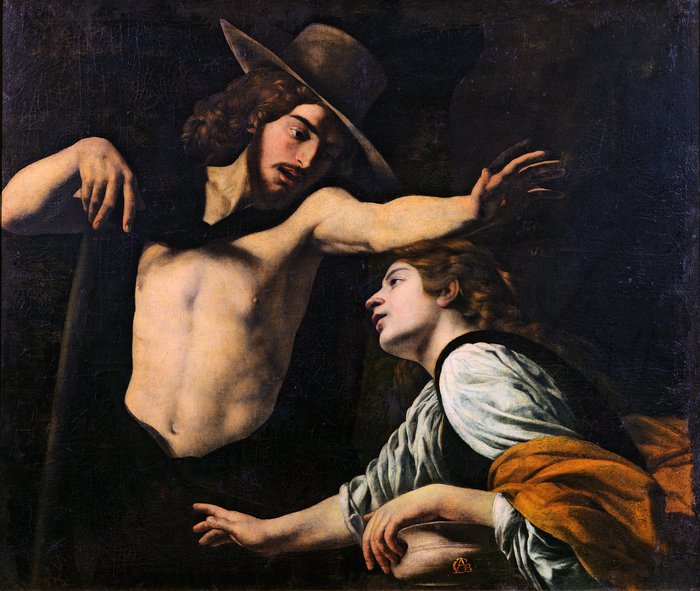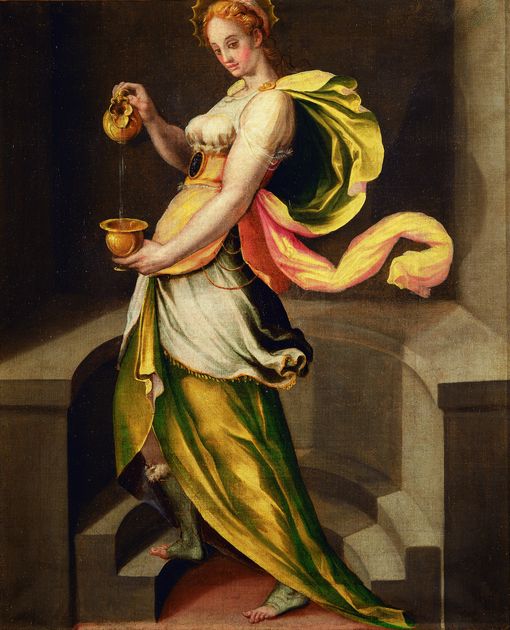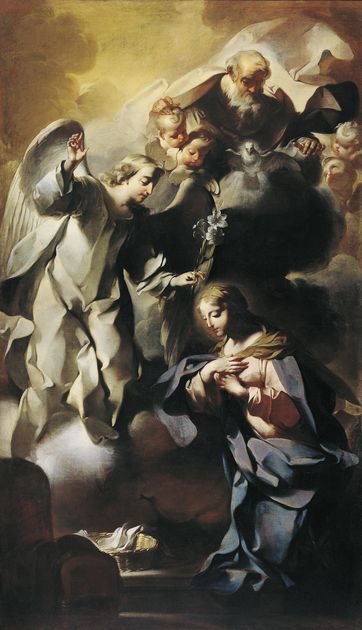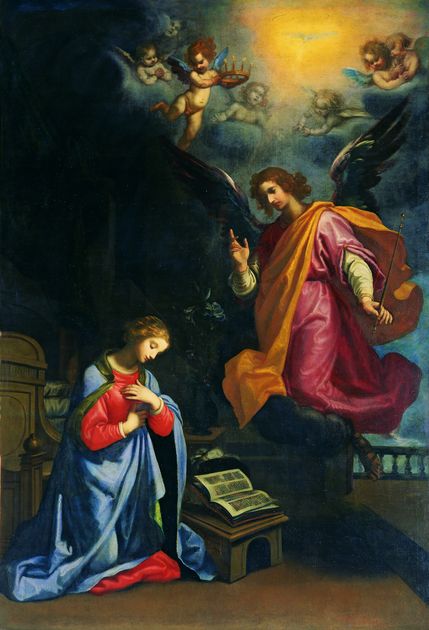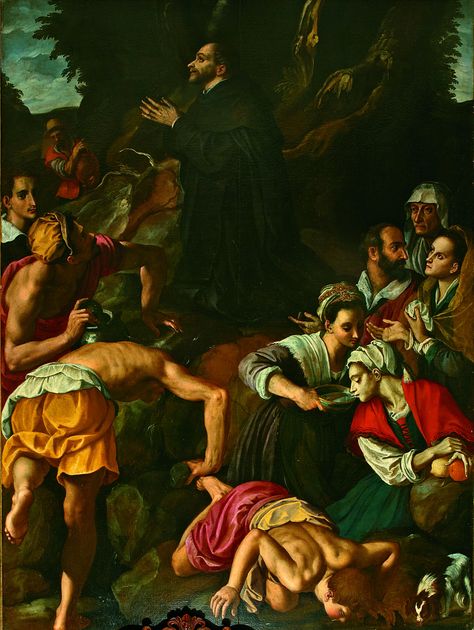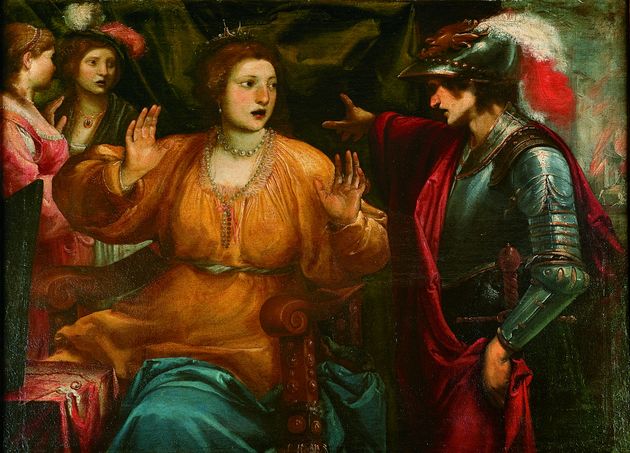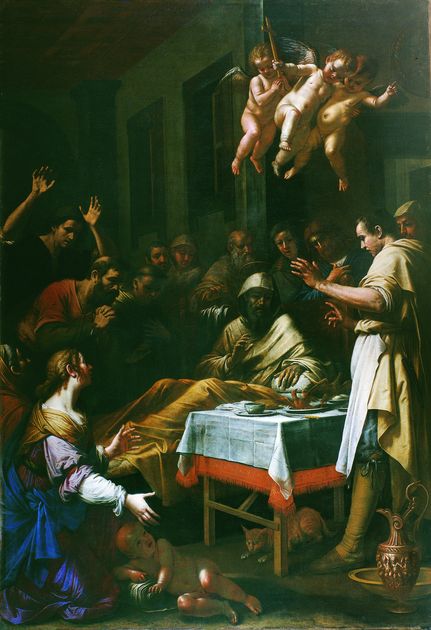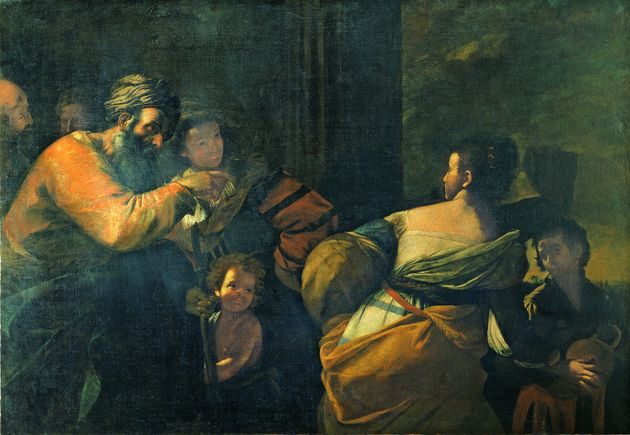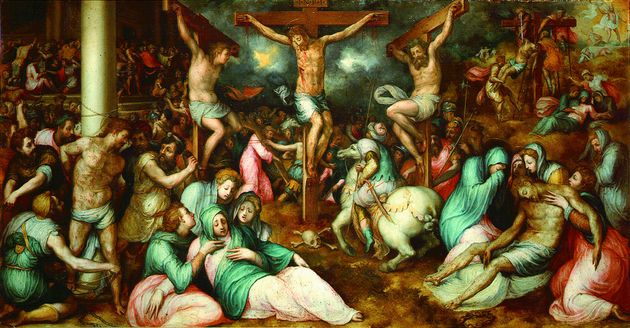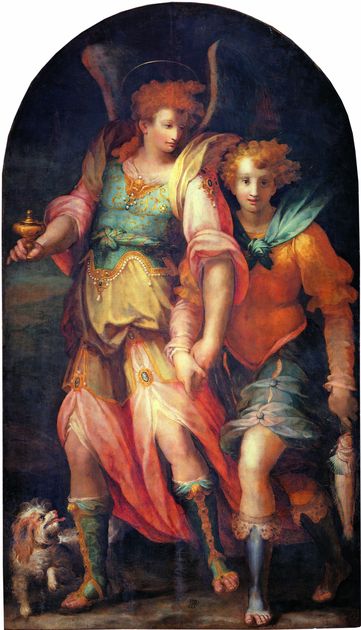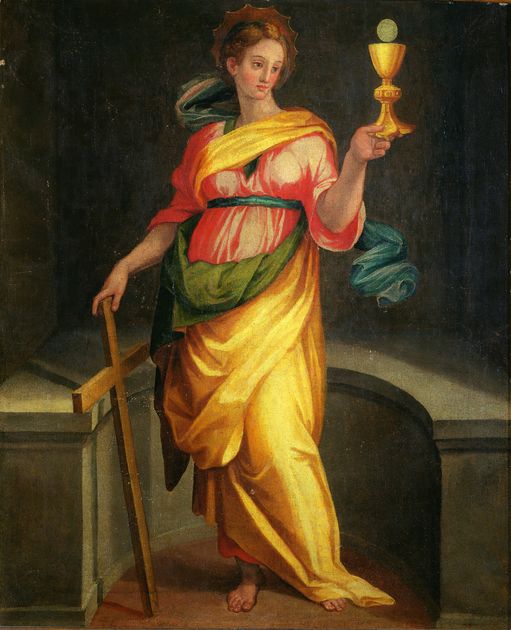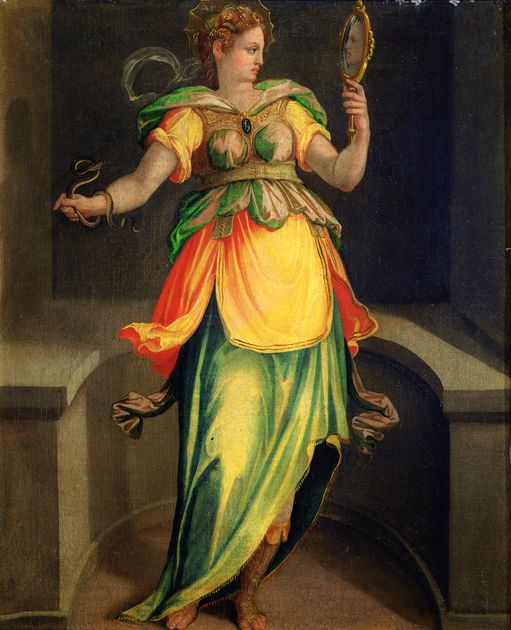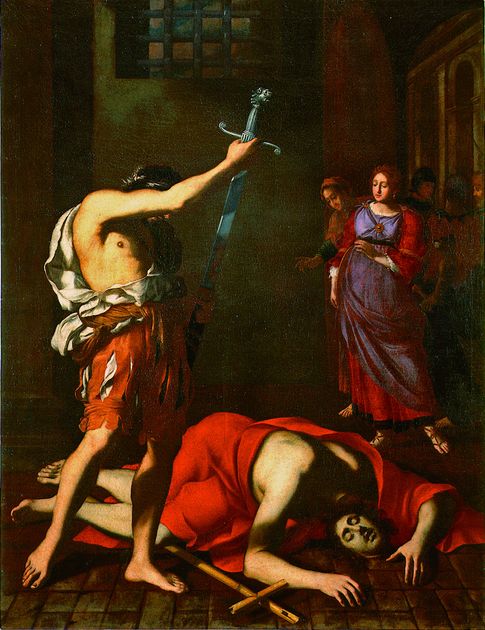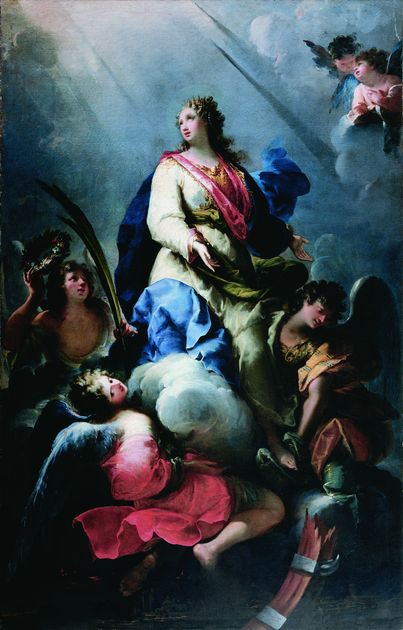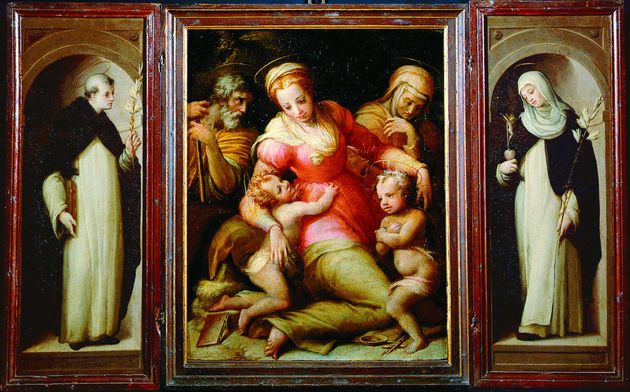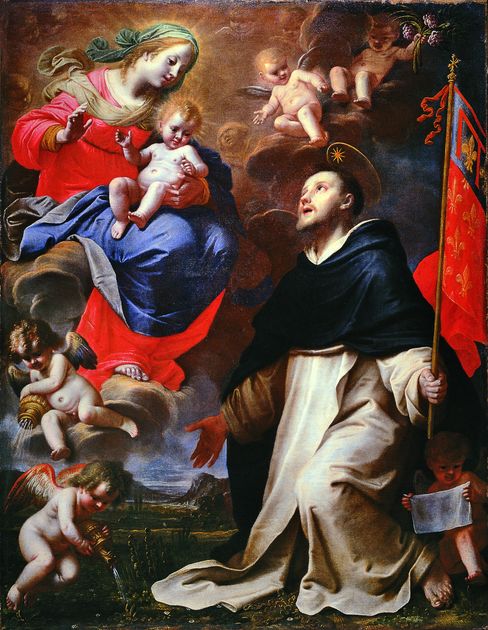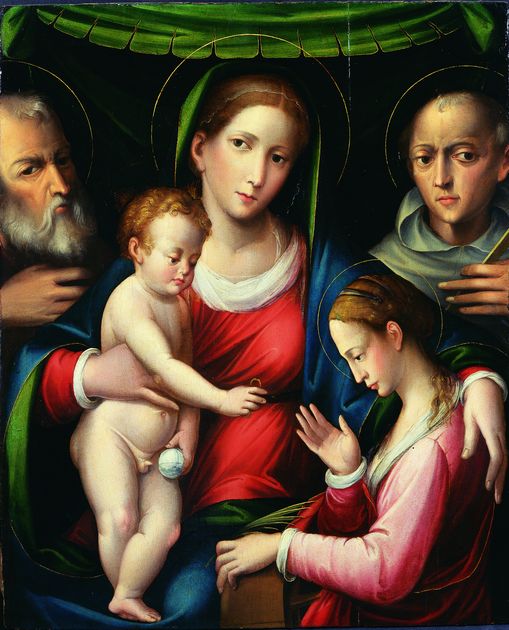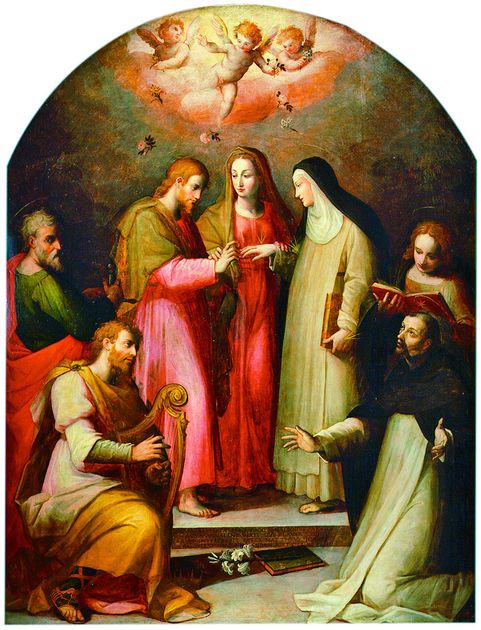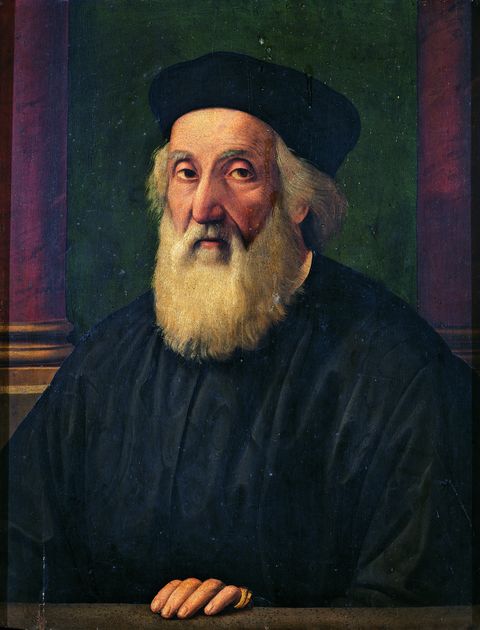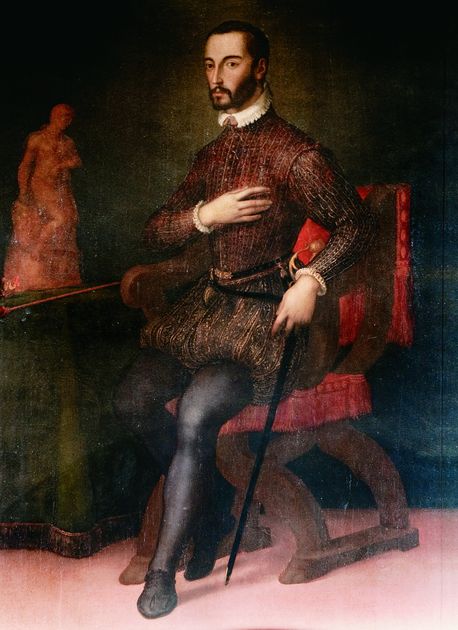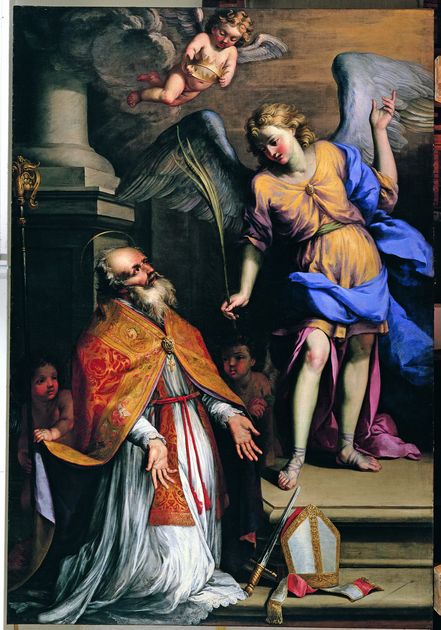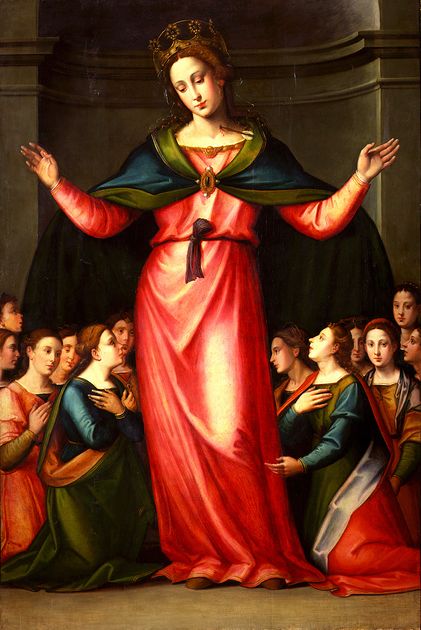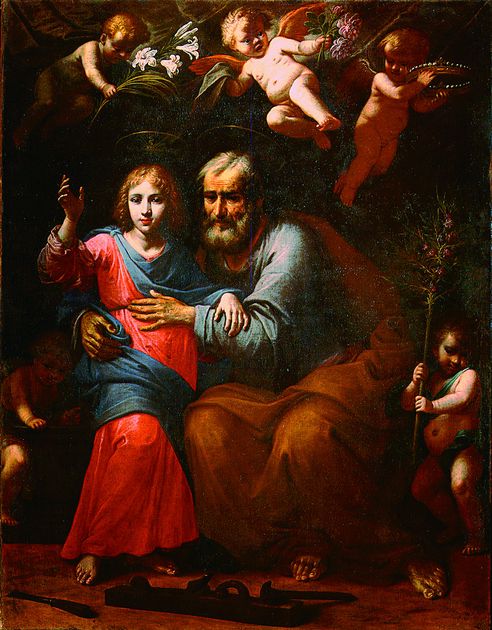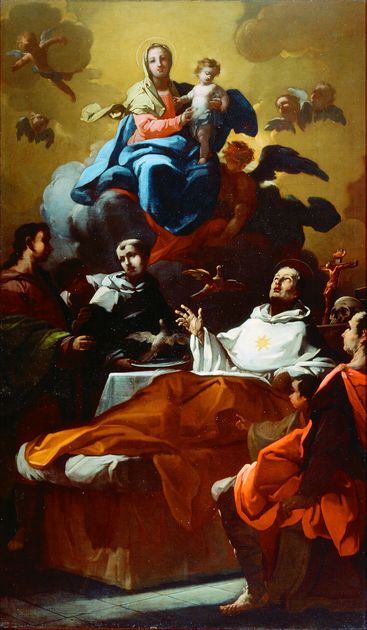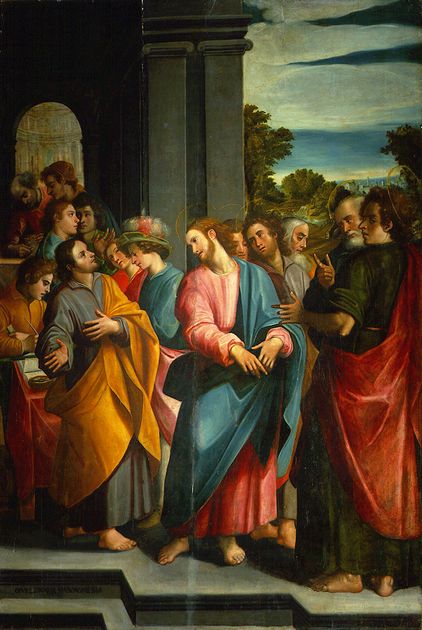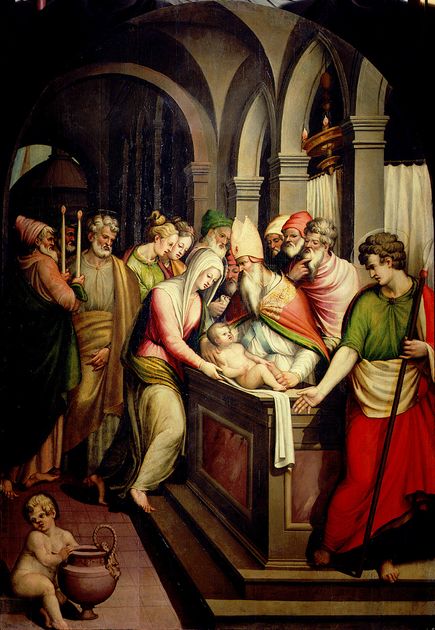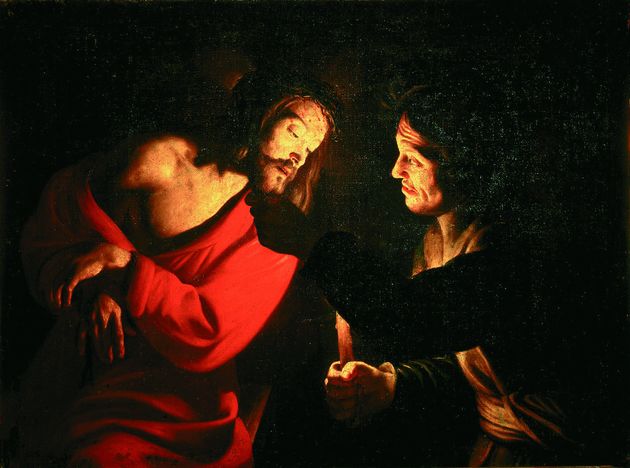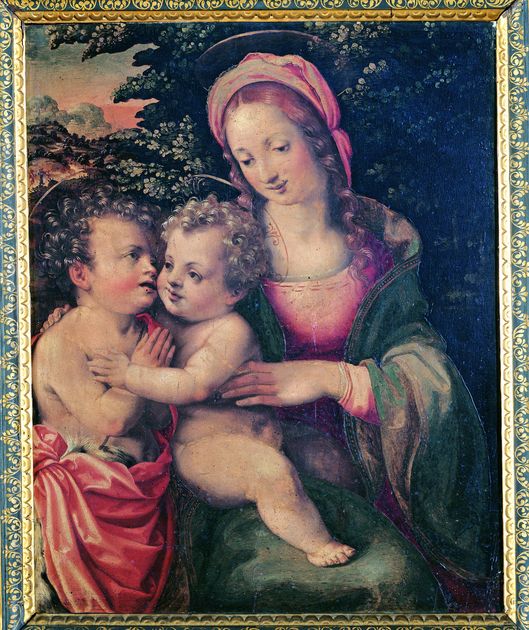The Noli me tangere of the Prato Museum probably dates to the period of Battistello Caracciolo’s stay in Florence at the Medici grand-ducal court (1617-1620). This picture is an exceptional synthesis of Battistello’s early career as artist and teacher of the great Neapolitan Caravaggesque school and his later work which, after his itinerant experiences in Rome, Genoa and Florence, promoted him to national protagonist of a softened tenebrism.
In this highly refined painting, authenticated with the signature “B.CA” on the ointment jar, Caracciolo interprets a subject from St. John’s Gospel which was very popular in early 17th-century iconography. John narrates that near the empty sepulchre Magdalene is surprised by the sudden appearance of Jesus, whom she does not recognise and mistakes for the gardener. He asks her not to approach or touch him. For this reason, Christ is shown with a broad-brimmed hat and his right hand resting on the tip of a stick. Concentrating our attention on the left hand, which is stretched out to stop the woman from advancing any further, we note the artist’s “second thoughts” in Christ’s finger, which was originally painted higher up. There is no true communication between the two figures, only an exchange of glances which is continually on the point of developing into a contact, as demonstrated by the daring nearness of Magdalene’s hair to the body which has appeared before her in a blaze of light. The final effect is rendered overwhelmingly emotional thanks to a tension created with optical tricks.
The most curious of these is the viewer’s ideal viewpoint, which is dictated by the position of Magdalene’s head, seen from the bottom upwards. This, added to the horizontal format of the picture, suggest the painting might originally have been conceived to be placed over a door.
Other works from the Caravaggesque school on display in Palazzo Pretorio are the Semiramis by Cecco Bravo, the Repudiation of Agar by Mattia Preti and the Good Samaritan by Nicola Malinconico.
